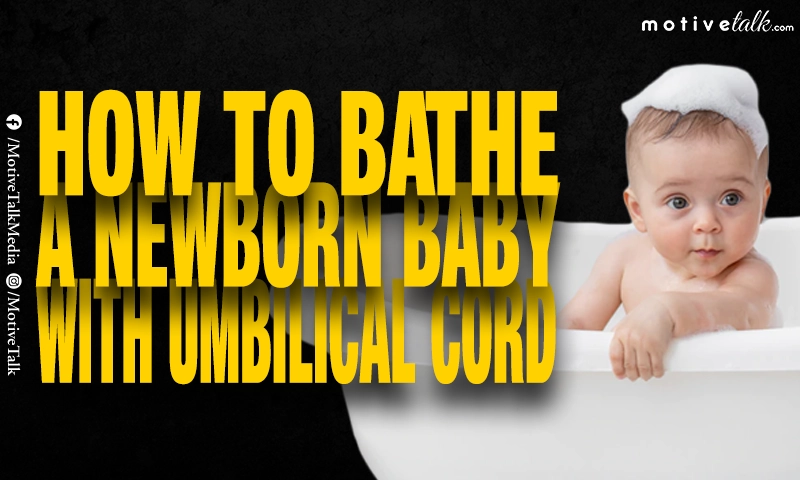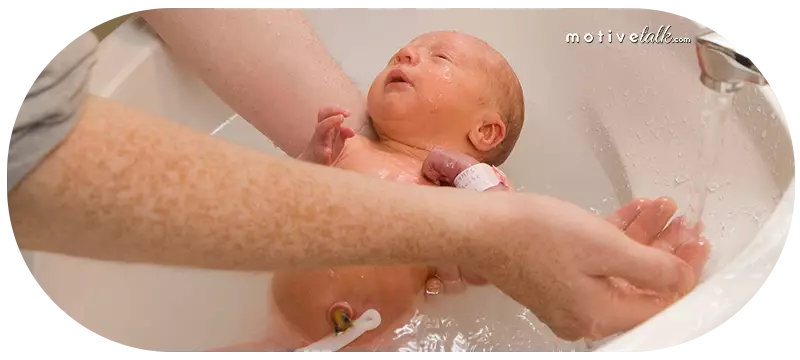How to
How to Bathe a Newborn Baby with Umbilical Cord (3 great tips)

Do you want to know How to Bathe a Newborn Baby with Umbilical Cord?
Congratulations! Your bundle of joy has arrived and with that, you have assumed a new role. You are a parent now and that little human is dependent on you for all their needs.
The baby needs nourishment, hygiene, sleep, loads, and loads of love to become a toddler. Babies get nourishment from breastfeeding and for hygiene, a daily bath is a must.
Tips to Bathe a Newborn Baby with Umbilical Cord
Bathing time is the most enjoyable time for a baby once he gets used to it. Babies love their caregivers’ touch and while bathing mother and baby get ample time to get to know each other and establish a bond.
Special care should be taken if the umbilical cord is still attached. The cord tends to fall after 3-4 days after birth. Bathing in a tub will have to wait for a few more days. Till then the baby can take a sponge bath.
1. Getting Ready
Before you start with the process, you must get all the things required in ONE place.
Remember never to leave your baby unattended to grab anything while bathing.
Things required for a sponge bath are:
-
- Boiled and cooled warm water
- Baby wash
- Baby clothes
- Baby towel
- Diaper
- Towel
- Washcloth
- Cotton balls
Once you have gathered all your supplies, pick up the baby and slowly start speaking reassuringly, so that baby doesn’t get startled. Follow the following steps to make a sponge bath a safe and wonderful experience:
-
- Select a warm room for the bath and check the temperature of the water with your elbow. It should neither be too hot, just warm.
- Slowly remove the clothes and diaper and again wrap the baby in a towel. By now the baby is awake and taking in the new experience. Be careful and proceed slowly.
- Lay the baby on a flat surface on a towel and be alert always if the baby is above ground level.
- Unwrap the towel, only the part where you are cleaning to avoid exposure.
- Take cotton balls and dip them in water and wash the eyes of the baby. Use the cotton ball for a single stroke outward or inward and discard.
- Take the washcloth, dip it in warm water without any soap and start with the top of the head, the face, behind the ears, chin, and neck folds. ( Soap to be avoided so that it doesn’t enter eyes and mouth)
- Now mix a little soap in water and dip the washcloth in it and remove excess water from it. Use it to now clean the body of the baby. The armpits and diaper area will be requiring your special attention.
- Now pat dry the baby with a clean towel especially in between the skin folds. You can wrap the baby in a towel with an inbuilt head cover so that the head keeps warm while the baby is drying off.
- Now the baby is ready to dress in new clothes and diapers and ready for a feed and a comfortable sleep.
2. Care of Umbilical Cord Stump
The part of the umbilical cord attached to the navel is called the stump. It falls off on its own and is best left alone. Some points to keep in mind,
-
- Keep it dry, so stick to a sponge bath for a while.
- While wearing a diaper, make sure the waistband is not covering the navel.
- Consider clothing the baby in light clothes so that there is no excess sweat in the diaper area.
Can I clean the umbilical cord stump if soiled?
Yes, of course, if the stump is soiled with urine or motion while changing the diaper it should be cleaned.
While giving a sponge bath, take a clean cotton ball, dip it in water and clean the base of the umbilical cord near the navel.
This you can do in a single circular motion.
The stump can also be cleaned with a clean cotton ball dipped in water.
But after doing so, be very careful and pat the navel and stump dry to prevent any occurrence of infections that may lead to foul-smelling discharge.
Warning Signs
Look out for warning signs like foul smell, pus discharge, or blood at the base of the cord near the navel.
Medical attention may be necessary to control infections and help the healing process.
The signs to look for in your baby are
- Poor feeding
- Fever >100°
- Lethargic
A call to the pediatrician about these symptoms is needed in this situation.
Conversely, if the cord is taking too long to fall away i.e. more than 4 weeks, then it may indicate a problem in the immune system of the baby or the anatomy.
Other conditions which may require medical attention are
- Umbilical Granuloma: babies might develop a small red lump near the navel from where the stump has fallen. It usually gets better on its own.
- Umbilical Hernia: This may appear as a bulge at the navel and the baby might cry a lot while passing poop. It is treatable under your doctor and not a dangerous condition.
Conclusion of Bathe a Newborn Baby with Umbilical Cord
The first bath of the baby should only be after the umbilical cord stump falls away after a week. Until then a bathtub needs to wait and a sponge bath is what the baby must be having.
Utmost care should be taken to keep the stump dry and clean to hasten the process of healing till the stump falls on its own. After the umbilical cord stump has fallen, you can bathe your baby in a tub without any worries.
New parents are often terrified of holding their babies let alone bathing them, as they look so small and fragile. These are techniques for handling a newborn baby which can help you to form an everlasting bond of love.
You may also read
-
Who is3 months ago
Who Is Fauzia Mubarak Ali? Famous Cat Stevens Wife & Their Children (Update: Jan 2024)
-
Comics9 months ago
Best Shrek Quotes About Life From The Shrek Series
-
Miscellaneous2 years ago
Lone Wolf Quotes – That Will Trigger Your Soul and Mind
-
Miscellaneous7 months ago
Warrior Quotes – That Will Make You More Stronger
-
Miscellaneous11 months ago
Top 27 Letterkenny Quotes – That Will Make Anyone Laugh
-
Super Hero2 years ago
Captain America Quotes – All Are Ultimate Leadership Quotes
-
Politicians2 years ago
Most Powerful Vladimir Putin Quotes – That Will Blow Your Mind
-
Miscellaneous2 years ago
Dalai Lama Quotes – That Will Change Your Values and Vision





























